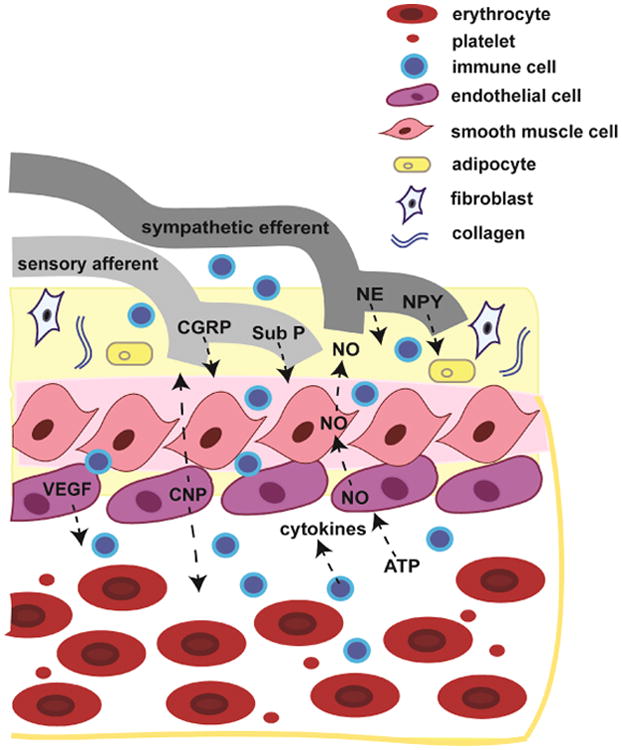Fig. 2.

Bidirectional signaling between meningeal nerve fibers, immune cells and cells comprising the associated blood vessels. Meningeal sensory afferents originating from the trigeminal ganglia innervate the meningeal vasculature and release vasoactive neuropeptides including substance P (Sub P) and calcitonin gene- related peptide (CGRP). In addition, sympathetic efferents from the superior cervical ganglion release neurotransmitters including neu- ropeptide Y (NPY) and norepinephrine (NE) that can act on vessels in the meninges. Conversely, cells comprising the blood vessel as well as those in the vascular lumen can influence meningeal sensory afferents. Endothelial cells can release c-type natriuretic peptide (CNP) and potentiate sensory afferent neuronal firing. During angio- genesis, endothelial cells release vascular endothelial cell growth factor (VEGF), which recruits immune cells such as macrophages and neutrophils. The recruited immune cells infiltrate the nearby tissue and release cytokines known to sensitize sensory afferents. In addition, changes in metabolic demand and other stimuli such as shear stress can cause the release of adenosine triphosphate (ATP) from multiple cell types within the vessel. Endothelial cell purinergic receptor activation causes the release and diffusion of nitric oxide (NO) throughout the vessel and surrounding tissue resulting in a wide range of effects including sensory afferent sensitization.
